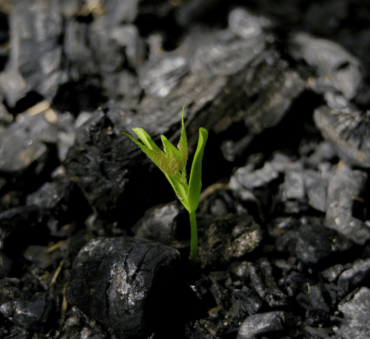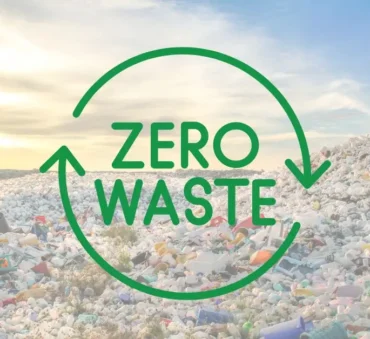The sustainable packaging market is expected to surpass 490 billion U.S. dollars by 2034, driven by consumer preferences for reducing environmental impact.
Not only does sustainable drink packaging reduce the environmental effects of bottled water, but it also supports a circular economy and strengthens long-term resource efficiency.
All things considered, companies should hold themselves accountable for implementing sustainable packaging for drinks, making it easier for customers to choose products that protect the planet. Whether you’re a beverage brand manager, packaging strategist, or sustainability leader, exploring sustainable packaging can give your brand a competitive edge while helping the environment.
Keep reading to learn about material innovations that reduce waste, design strategies that drive sustainability, and more.
Key Takeaways
- Sustainable drink packaging is functional packaging designed to minimize environmental impact across its entire lifecycle, requiring a strategy that considers the material, manufacturing, use, and disposal.
- There are various solutions that support sustainable packaging, such as aluminum, rPET, paperboard and compostables, refill and reuse systems, and innovative biodegradable materials.
- Life cycle assessments measure a product’s environmental impact across every stage of its life, helping guide material and design choices that support long-term sustainability.
- Packaging should align with end-of-life options like recycling, composting, or reuse to ensure responsible and sustainable disposal.
What is Sustainable Drink Packaging?

Source: epa.com
Sustainable drink packaging is functional packaging designed to have minimal negative environmental impact throughout its entire lifecycle. A successful strategy must take into account the material, manufacturing, use, and disposal to truly support sustainable beverage packaging.
By using recycled or renewable materials, companies can lower their carbon footprint, reduce waste, and conserve valuable natural resources. And implementing the 3Rs in waste management—reduce, reuse, and recycle—ensures sustainability even after products are used, keeping resources in circulation and reducing the amount of waste sent to landfills.
It’s important to note that sustainable packaging is not a one-time fix but rather an ongoing design improvement process that continually evolves to protect the planet.
Material Innovations & Design That Reduce Waste
What materials are being used to create sustainable drink packaging?
Let’s take a look:
1. Aluminum: Circular & Efficient
Aluminum packaging is infinitely recyclable, making it a great option for eco-friendly beverage packaging.
To put this into perspective, recycled aluminum saves 95% of the energy needed to produce new aluminum, could save the U.S. economy more than $1 billion annually if all beverage cans were recycled, and already makes up over 80% of the nation’s aluminum production.
One company putting this into action is Coca-Cola, which in 2019 announced that its bottled water brand DASANI would soon be sold in the U.S. in aluminum cans and bottles, as well as in packaging made with increased recycled PET (rPET) and plant-based resin.
According to Coca-Cola, “Updates to DASANI’s packaging line-up are designed to reduce plastic waste and increase the use of recycled and renewable materials in the United States, while ensuring that all DASANI bottles continue to be fully recyclable.”
2. Plastic & rPET: Lightweight & Efficient
rPET is recycled PET (polyethylene terephthalate) that has been processed and transformed from used plastic materials into new products. This reduces the environmental impacts of excessive plastic consumption, improves waste management in food and beverage industry, and promotes a more circular economy.
A great example of this is PepsiCo’s commitment to sustainable drink bottles, including its move to package LIFEWTR in 100% rPET. PepsiCo Chairman and CEO Ramon Laguarta comments on this, stating that “As one of the world’s leading food and beverage companies, we recognize the significant role PepsiCo can play in helping to change the way society makes, uses, and disposes of plastics. We are doing our part to address the issue head on by reducing, recycling and reinventing our packaging to make it more sustainable, and we won’t stop until we live in a world where plastics are renewed and reused.”
3. Paperboard & Compostables
Paperboard cartons made from renewable fibers are an increasingly popular choice for sustainable drink packaging, especially when paired with protective coatings. These materials can reduce reliance on traditional plastics, but their true environmental benefit depends on proper composting and recycling systems.
To maximize impact, expanding composting infrastructure is essential for waste management in food industry, ensuring these packages can break down as intended rather than end up in landfills.
4. Refill & Reuse Systems
Reusable packaging can reduce the environmental impact of single-use packaging by limiting waste and conserving resources. A real-world example of this is Starbucks, which offers multiple cup options to reduce waste and appeal to customer preferences.
Customers can choose a ceramic mug or glass for in-store drinks, bring their own personal cup, or use a commercially compostable cup, and they have even piloted a program making returnable cups the default option for to-go drinks across an entire city.
Since introducing the option for customers to use a personal cup for every visit in the U.S., Starbucks has helped eliminate on average two million cups per month from waste streams.
5. Innovative Biodegradable Materials
Thanks to innovations in food and beverage packaging, companies can use biodegradable materials to reduce their environmental impact.
There are various types of recyclable drink packaging, including compostable paper lined with plant- or water-based coatings. Another example is a plant-based material called Polylactic Acid (PLA), which is made from plants like corn, sugarcane, or cassava.
Some companies are also adopting edible packaging to reduce waste. There are many advantages of edible packaging, including providing an innovative, consumer-friendly alternative to traditional packaging that helps increase landfill diversion.
Design Strategies That Drive Recyclability and Reuse
The design of sustainable drink bottles makes a big difference in how easily they can be reused, recycled, and kept within a circular economy.
Here are some key considerations for companies:
- Mono-material packaging: When drink packaging is only composed of one material, the sorting and recycling process is much simpler. This makes it easier to recycle items like expired water bottles, keeping them out of landfills and supporting a circular economy.
- Clear recycling labels and disposal instructions: Labels play an important role in creating environmentally friendly drink packaging, as they help consumers sort and dispose of packaging correctly. Labels should clearly indicate whether the bottle, cap, or label itself is recyclable, compostable, or requires special disposal.
- Refill and reuse models: Companies that want to implement a refill and reuse system must create reusable drink containers that are durable enough to withstand repeated use and cleaning. Features like standardized sizes and clear refill instructions make the design even more practical and convenient for consumers.
- Tethered caps and closures: Designing bottles with caps that remain attached ensures the entire package is recycled together. This prevents small components from being lost in the recycling process.
A Simple Roadmap for Brands to Win at Sustainable Drink Packaging
If you’re interested in adopting more sustainable drink packaging, here are some tips to get started:
Step 1: Define your goals
What is your company trying to achieve?
You might aim to reduce plastic use, lower carbon emissions, or improve recyclability. By setting clear, measurable objectives, you can build a foundation that ensures your sustainability efforts stay focused and impactful.
Step 2: Conduct a life cycle assessment
Life cycle assessments measure the environmental impact of a product through every stage of its life. In other words, it’s a great tool for comparing packaging materials to see which options have the lowest overall footprint, from raw material sourcing to disposal or recycling.
These assessments typically involve four key steps: defining the goal and scope, conducting an inventory analysis, assessing environmental impacts, and interpreting the results. This information can then be used to prioritize material and design choices to enhance long-term sustainability.
Step 3: Consider end-of-life infrastructure
Your packaging should align with the end-of-life infrastructure available, whether that’s recycling, composting, or reuse systems. For instance, if you’re using plant-based materials that can be composted, you can provide a dedicated waste bin for customers to dispose of their empty drinks and partner with a waste management professional to ensure effective and compliant composting.
This not only supports your sustainability goals but also makes it easier for customers to participate in responsible disposal.
Step 4: Create a pilot program
It can be scary to make big changes, especially if you’re unsure if they’ll be successful. To address this concern, you can create pilot programs to test new ideas in select markets, such as reusable or refill models.
This way, you can see how customers respond to new programs, measure their success, and adjust logistics before rolling the program out on a larger scale.
Step 5: Educate consumers
An important part of implementing eco-friendly packaging for drinks is to get your customers on board. By educating them on why packaging is important and how to participate, you can make an even bigger difference.
You can do this through clear on-package messaging, in-store signage, or digital campaigns that show customers the impact of their choices.
Challenges Facing Sustainable Drink Packaging (+ Practical Solutions)
Sustainable drink packaging is becoming a priority for both consumers and regulators, but brands often face hurdles when making the transition.
Common challenges include:
- Higher cost of eco-friendly materials
- Limited infrastructure for recycling or composting
- Evolving legislation that varies from region to region
To navigate these challenges, companies need practical solutions. This starts with selecting materials that align with local recycling or composting systems, building consumer awareness around proper disposal, and ensuring compliance with emerging regulations.
Partnering with the right waste management provider can also make the process more seamless and cost-effective.
At Shapiro, we support brands in turning these challenges into opportunities. Our team helps companies identify recyclable and compostable materials that align with existing infrastructure while also ensuring compliance with local regulations.
From on-time collection to compliant transportation and providing you with a certificate of destruction, we help you throughout every stage of your journey.
With our waste management services, you can keep your materials in circulation, thereby diverting waste from landfills, achieving sustainability goals, and attracting more eco-conscious consumers.
Conclusion
Sustainable drink packaging reduces waste, conserves resources, and reinforces brand values.
Companies interested in creating eco-friendly drink packaging may require product redesign, such as switching to mono-materials, adopting refill models, or simplifying labels to improve recyclability. That said, even the smallest design change can yield big circular benefits for your company.
In addition, a critical part of your strategy should be knowing how to dispose of waste properly to extend the life of valuable resources.
At Shapiro, we specialize in beverage waste management and have overseen the destruction of more than 1 billion full beverage containers—and counting.
If you’re interested in learning more about our waste management solutions, contact us today.
FAQs about Sustainable Drink Packaging
The most eco-friendly drinks packaging is reusable containers, as they eliminate single-use waste. Other sustainable packaging materials include aluminum and rPET.
The 7 Rs of sustainable packaging are: rethink, refuse, reduce, reuse, recycle, regenerate, and replace.
It’s generally better to drink out of aluminum because it is infinitely recyclable and has a lower long-term environmental impact than plastic.
An eco-friendly way of packaging is using recyclable, compostable, or reusable materials designed to minimize waste and conserve resources.
Baily Ramsey, an accomplished marketing specialist, brings a unique blend of anthropological insight and marketing finesse to the digital landscape. Specializing in educational content creation, she creates content for various industries, with a particular interest in environmental initiatives.



